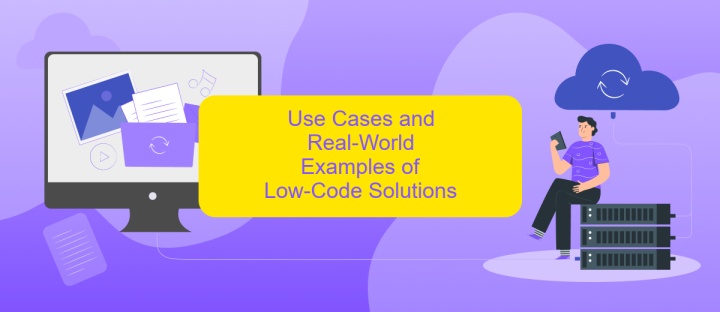Microsoft Low-Code Platform
In today's fast-paced digital landscape, businesses are increasingly seeking agile solutions to drive innovation and efficiency. Microsoft's Low-Code Platform emerges as a powerful tool, enabling organizations to develop applications swiftly with minimal coding expertise. By leveraging intuitive drag-and-drop interfaces and pre-built templates, this platform empowers both professional developers and non-technical users to collaborate and create robust applications, accelerating digital transformation across industries.
Introduction to Microsoft Low-Code Platform and its Benefits
Microsoft Low-Code Platform is revolutionizing the way businesses approach application development. Designed to minimize the complexity of traditional coding, this platform empowers users with varying technical expertise to create robust applications. By streamlining the development process, Microsoft’s low-code solutions enable organizations to rapidly respond to changing business needs and enhance productivity.
- Increased efficiency: Speeds up the development cycle by allowing non-developers to build applications.
- Cost-effective: Reduces the need for extensive IT resources and cuts down on development costs.
- Scalability: Easily adapts to growing business demands with flexible and scalable solutions.
- Integration: Seamlessly connects with existing systems and data sources, enhancing overall functionality.
- Innovation: Encourages creativity and innovation by empowering more employees to participate in the app development process.
Ultimately, Microsoft Low-Code Platform is a game-changer for businesses seeking to innovate and stay competitive. By democratizing application development, it allows organizations to leverage their internal talent pool, reduce dependency on specialized developers, and accelerate digital transformation. As a result, companies can focus on strategic initiatives while maintaining agility in an ever-evolving market landscape.
Key Components of the Microsoft Low-Code Ecosystem (Power Platform)

The Microsoft Low-Code Ecosystem, known as the Power Platform, is a suite of tools designed to empower users to create custom applications with minimal coding. At its core, the Power Platform consists of four key components: Power Apps, Power Automate, Power BI, and Power Virtual Agents. Power Apps allows users to build custom applications tailored to specific business needs, while Power Automate streamlines workflows by automating repetitive tasks. Power BI provides robust data analytics, enabling users to visualize and gain insights from their data. Power Virtual Agents allows for the creation of intelligent chatbots without the need for extensive programming skills.
A pivotal aspect of the Power Platform is its ability to integrate seamlessly with various external services and applications, enhancing its functionality. Tools like ApiX-Drive can be instrumental in this regard, offering a user-friendly interface for setting up integrations without technical expertise. This integration capability ensures that businesses can connect their Power Platform solutions with a wide array of third-party services, thus expanding their operational capabilities and fostering a more interconnected digital ecosystem.
Use Cases and Real-World Examples of Low-Code Solutions

Low-code platforms, like Microsoft's Power Apps, are revolutionizing how businesses approach application development by enabling faster and more efficient solutions. These platforms empower users with minimal coding experience to create sophisticated applications, fostering innovation across various sectors.
- In healthcare, low-code solutions streamline patient management and data processing, enhancing patient care and operational efficiency.
- Retailers use low-code platforms to develop custom inventory management systems, improving supply chain operations and reducing costs.
- In finance, low-code applications facilitate compliance tracking and risk management, ensuring regulatory adherence while optimizing workflows.
- Educational institutions utilize low-code tools to automate administrative tasks, allowing educators to focus more on teaching and student engagement.
- Manufacturing companies implement low-code solutions for real-time monitoring and maintenance of equipment, boosting productivity and minimizing downtime.
These examples illustrate the versatility and impact of low-code platforms in diverse industries. By reducing the dependency on traditional IT resources, businesses can rapidly adapt to changing market demands and drive digital transformation. As a result, organizations not only enhance their operational capabilities but also gain a competitive edge in their respective fields.
Building Your First Low-Code Application: A Practical Example

Creating your first low-code application with Microsoft's platform is an exciting journey into the world of rapid development. Start by accessing the Microsoft Power Apps environment, where you can quickly design and deploy applications without extensive coding knowledge. Begin by choosing a template that suits your business needs, such as a customer feedback form or an inventory tracker.
Once you have selected a template, customize it to meet your specific requirements. Use the intuitive drag-and-drop interface to add or modify components like text fields, buttons, and images. You can also integrate data sources, such as Excel or SharePoint, to populate your app with real-time information.
- Sign in to Microsoft Power Apps.
- Select a suitable app template.
- Customize the app layout and features.
- Connect to data sources for dynamic content.
- Test the app to ensure functionality.
- Publish and share the app with your team.
By following these steps, you can build a functional low-code application tailored to your organization's needs. This approach not only accelerates the development process but also empowers non-developers to contribute to digital transformation initiatives. As you gain confidence, explore more advanced features and integrations to enhance your application's capabilities.
- Automate the work of an online store or landing
- Empower through integration
- Don't spend money on programmers and integrators
- Save time by automating routine tasks
Future of Low-Code and Microsoft's Role in its Development
The future of low-code development is poised for significant growth, with Microsoft's Power Platform leading the charge. As businesses increasingly seek to accelerate digital transformation, low-code platforms offer a streamlined approach to application development, reducing the need for extensive coding expertise. Microsoft's Power Platform empowers users to create custom applications, automate workflows, and analyze data with ease, making it a pivotal tool for organizations aiming to enhance efficiency and innovation. With continuous advancements in AI and machine learning, Microsoft's low-code solutions are expected to become even more intuitive and powerful, further democratizing software development.
Moreover, the integration capabilities of low-code platforms are crucial for seamless operations. Services like ApiX-Drive can enhance these capabilities by providing easy-to-use tools for setting up integrations between various applications, ensuring data flows smoothly across systems. As low-code adoption grows, Microsoft's role in fostering an ecosystem that supports both development and integration will be vital. By enabling users to connect disparate systems effortlessly, Microsoft and its partners can drive a new era of agile and responsive business solutions, cementing the future of low-code technology.
FAQ
What is Microsoft Low-Code Platform?
How does Microsoft Power Apps work?
Can non-developers use Microsoft Low-Code Platform effectively?
What types of applications can be built using Microsoft Low-Code Platform?
How can I integrate Microsoft Low-Code applications with other services?
Routine tasks take a lot of time from employees? Do they burn out, do not have enough working day for the main duties and important things? Do you understand that the only way out of this situation in modern realities is automation? Try Apix-Drive for free and make sure that the online connector in 5 minutes of setting up integration will remove a significant part of the routine from your life and free up time for you and your employees.


